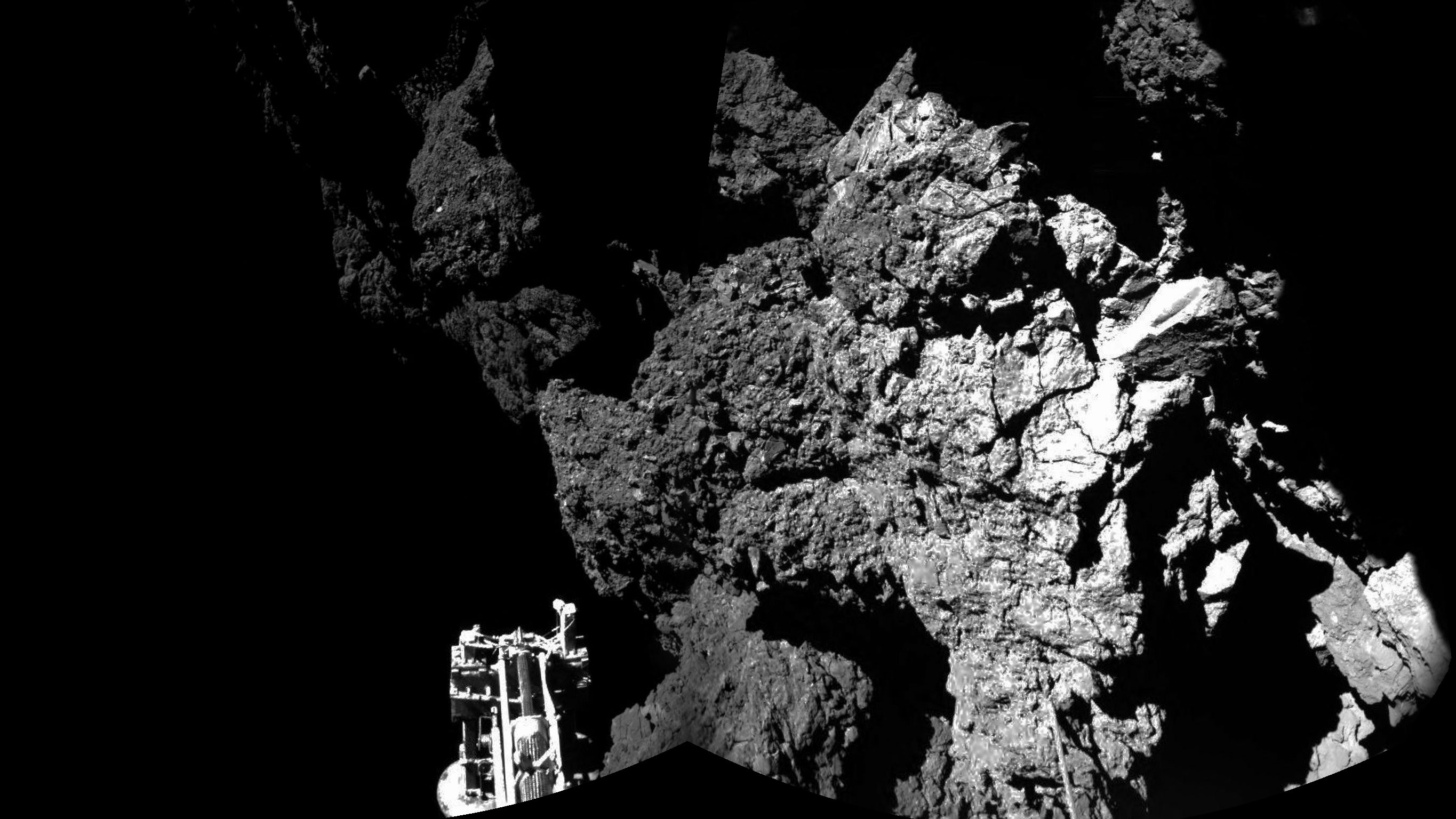It's the 10-year anniversary of the first image of a human-made object touching a 4.6 billion-year-old comet
The spacecraft Philae touched down on the comet in a world-first in November 2014

On November 12 2014, Philae – the lander of the spacecraft Rosetta of the European Space Agency (ESA) – landed on a comet for the first time in history, sending back images and data.
Making space exploration history, Philae touched down on Comet 67P / Churyumov-Gerasimenko after a 10-year journey through the solar system covering over 310 million miles / 500 million kilometers.
Its CIVA (Comet Infrared and Visible Analyser) cameras took the first image of a human-made object touching a 4.6 billion-year-old solar system relic. The principal goals of the mission were to study the origins of comets, and the relationship between cometary and interstellar material and implications with regard to the origin of the solar system.
Philae took seven hours to descend onto the comet once it detached from Rosetta, “sensing the environment around the comet, taking stunning imagery as the first landing site came into view,” says the ESA.
Prior to the landing, scientists scrutinized images of the surface of the comet to identify a viable place for Philae to land, and within a few weeks a final choice was made: a smooth-looking patch, later named Agilkia, located on the smaller of the two lobes on the comet.
Despite discovering that Philae’s active descent system was defective the night before the launch, which would provide downward thrust to prevent a rebound touchdown, the spacecraft would have to rely on harpoons and ice screws in its three feet to fix it.
ABOVE: Watch the video of Philae's descent
The best camera deals, reviews, product advice, and unmissable photography news, direct to your inbox!
Undeterred by difficulties, Philae’s touchdown on Agilkia was spot on, and the sensors on Philae’s feet felt the touchdown vibrations, generating the first recording of contact between a human-made object and a comet.
However, it soon became apparent that Philae’s harpoons hadn’t fired, and it was on the move again, eventually making contact with the comet four times. This unexpected event ended up being an advantage, as the craft was able to collect data from multiple sites.
“After colliding with a cliff, Philae scraped through its second touchdown site, providing the first in situ measurement of the softness of the icy-dust interior of a boulder on a comet,” says the ESA.
“The simple action of Philae 'stamping' an imprint in billions-of-years-old ice revealed the boulder to be fluffier than froth on a cappuccino, equivalent to a porosity of about 75%.”
After landing on the comet and transmitting data for 57 hours, Philae’s battery died and it was only located almost 24 months later. The spacecraft OSIRIS discovered it through images taken on September 02 2024 using its narrow-angle camera.
If you're interested in taking your own space photos, we've rounded up the best cameras for shooting in low light here. We've also put together our favorite picks of the best cameras for astrophotography, as well as the best astrophotography lenses.
Hunting for Black Friday deals? Take a look at the best Black Friday telescope deals, and the best Black Friday camera deals.

After graduating from Cardiff University with an Master's Degree in Journalism, Media and Communications Leonie developed a love of photography after taking a year out to travel around the world.
While visiting countries such as Mongolia, Kazakhstan, Bangladesh and Ukraine with her trusty Nikon, Leonie learned how to capture the beauty of these inspiring places, and her photography has accompanied her various freelance travel features.
As well as travel photography Leonie also has a passion for wildlife photography both in the UK and abroad.


